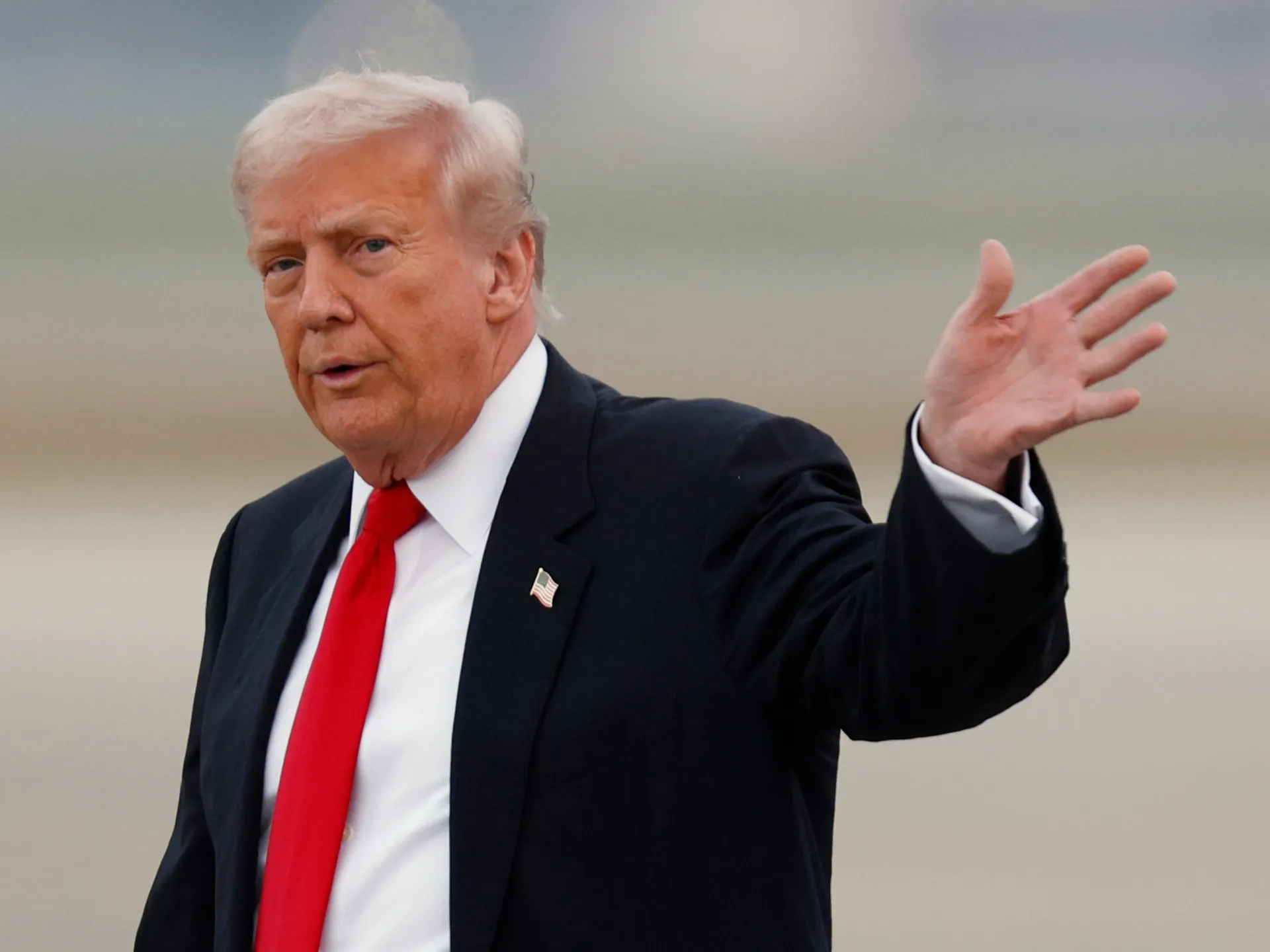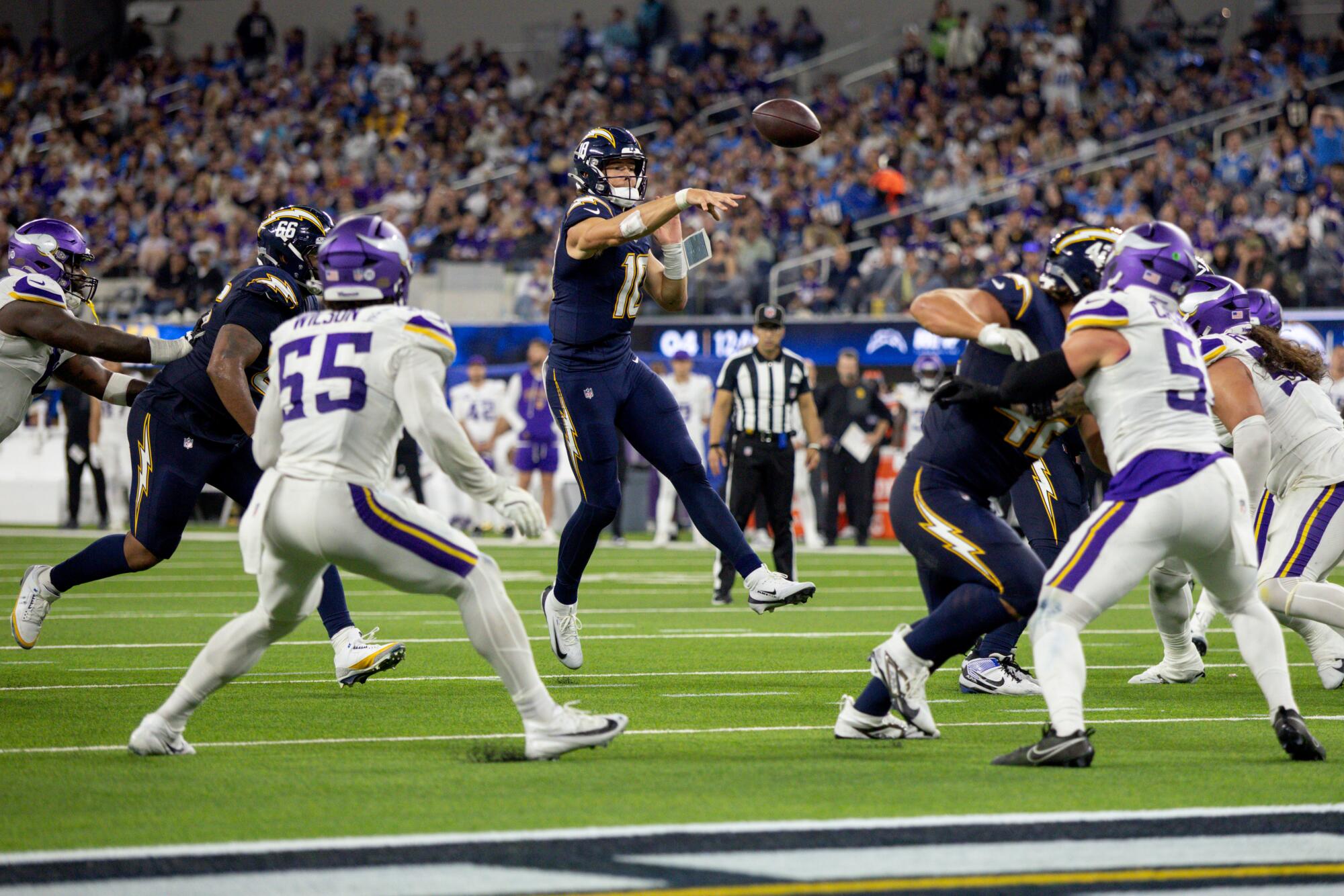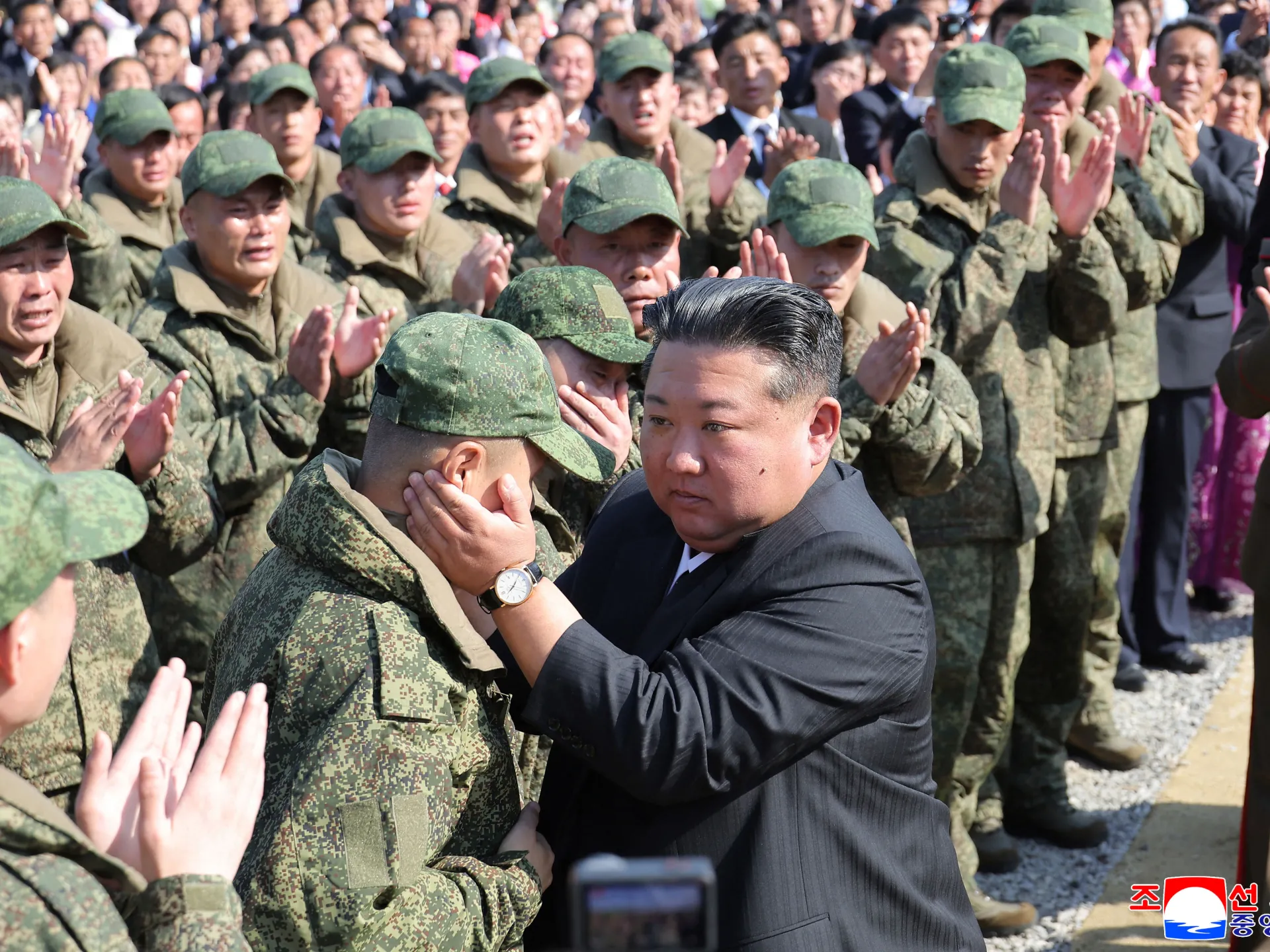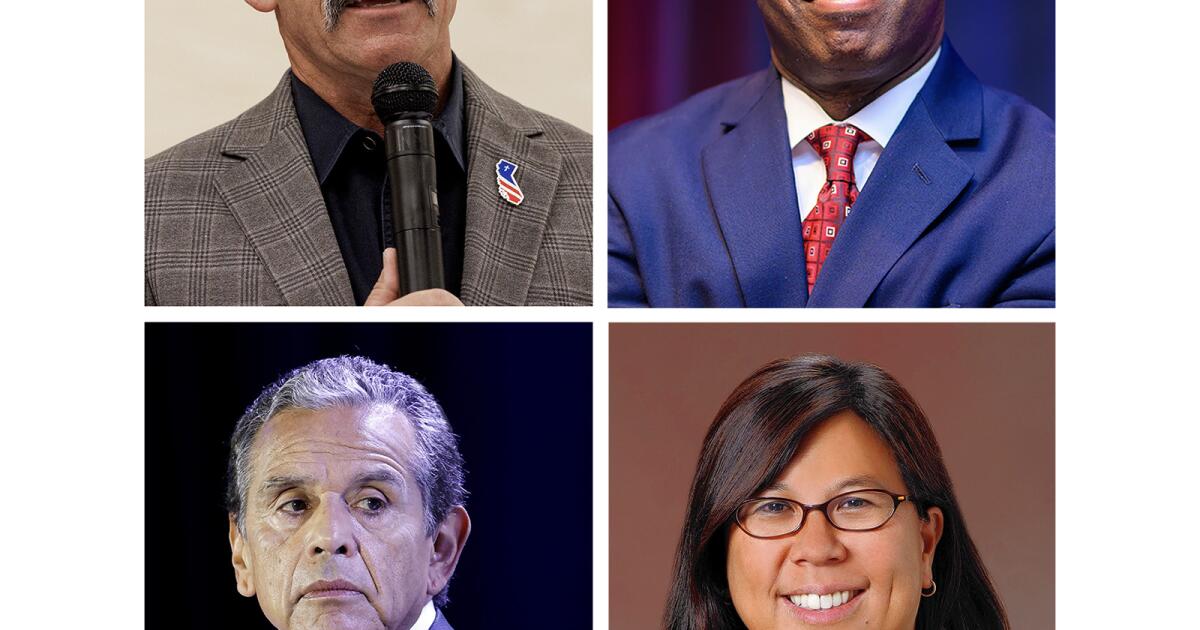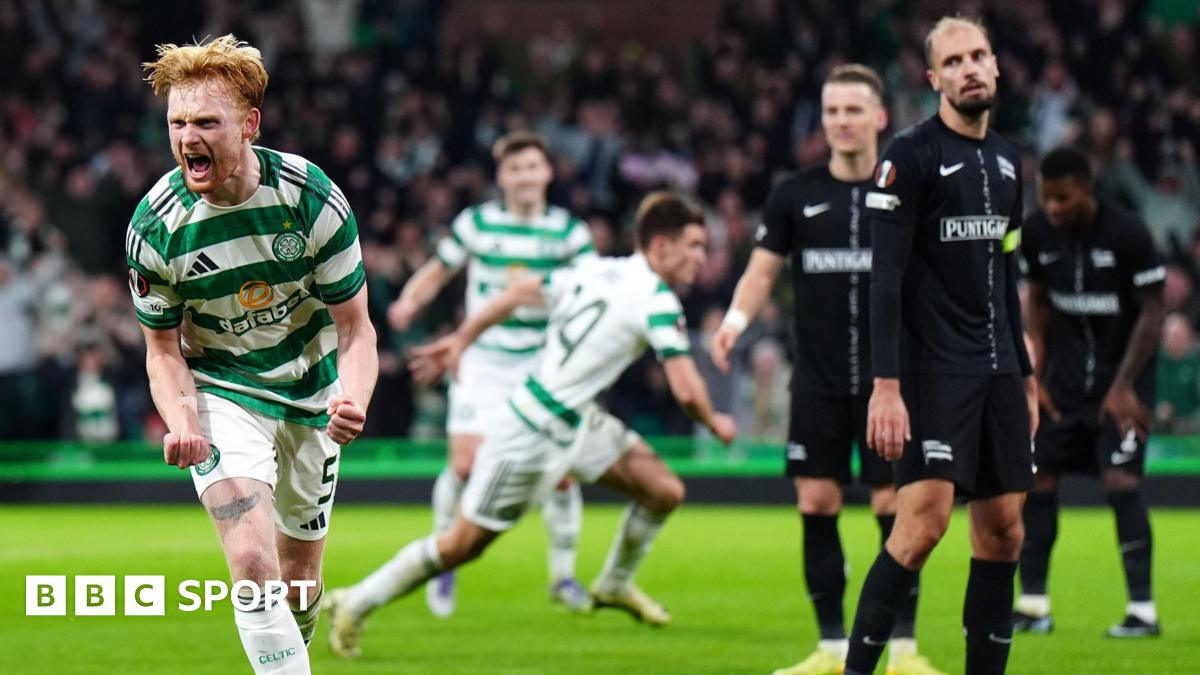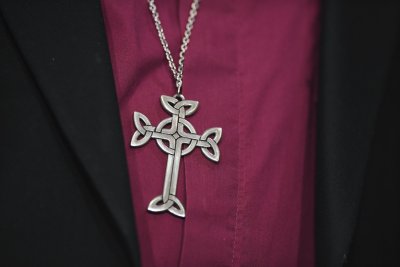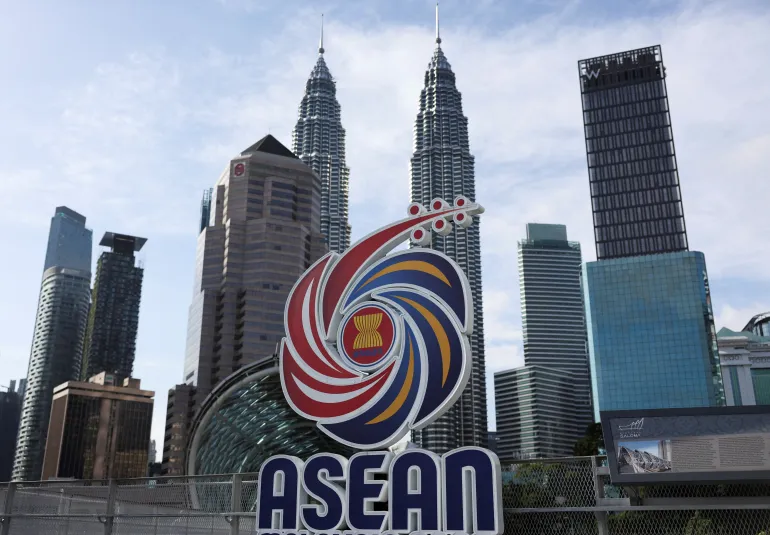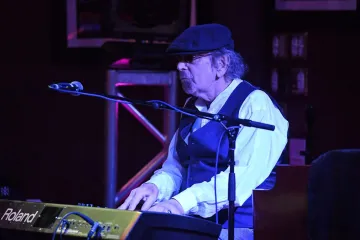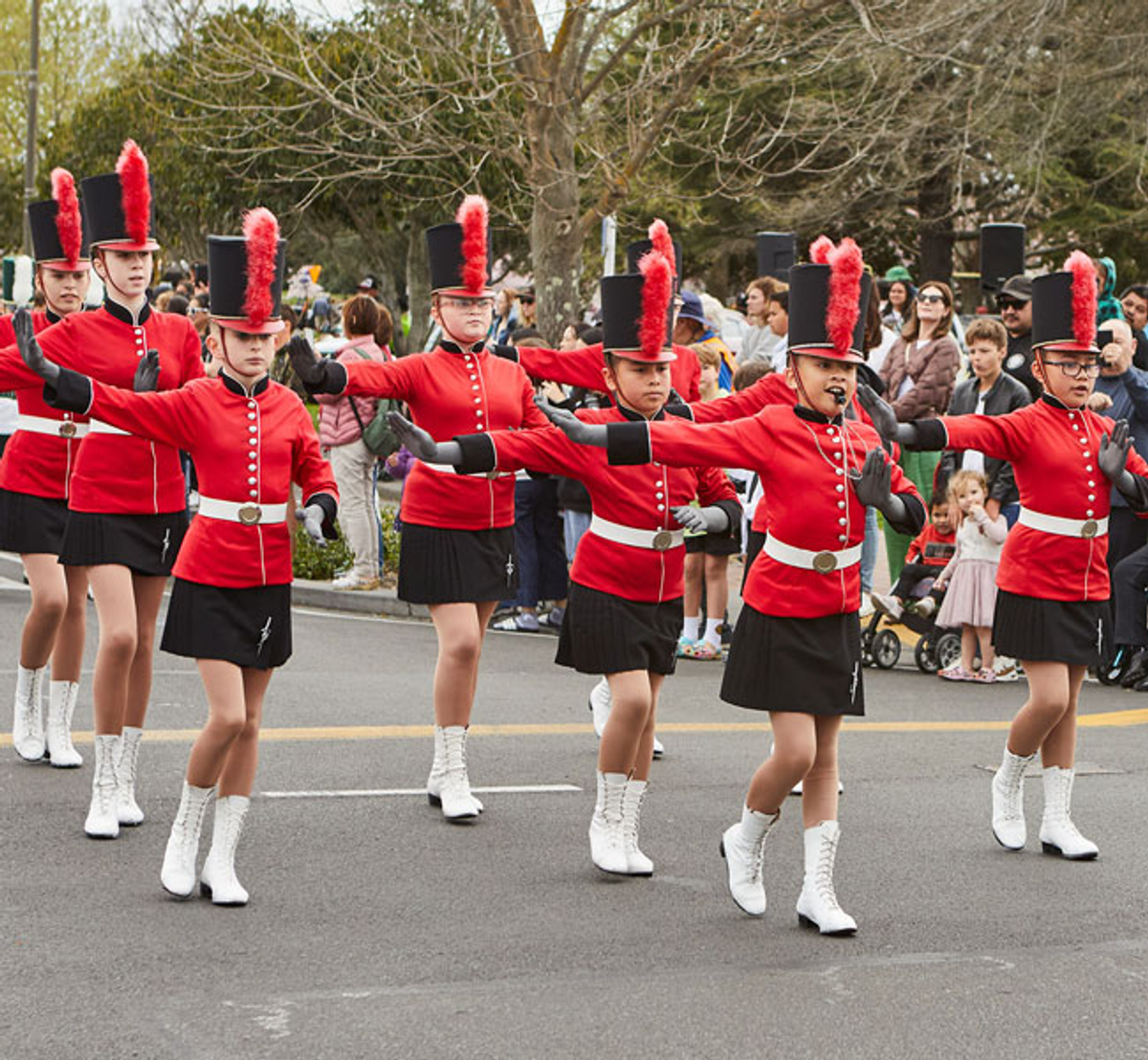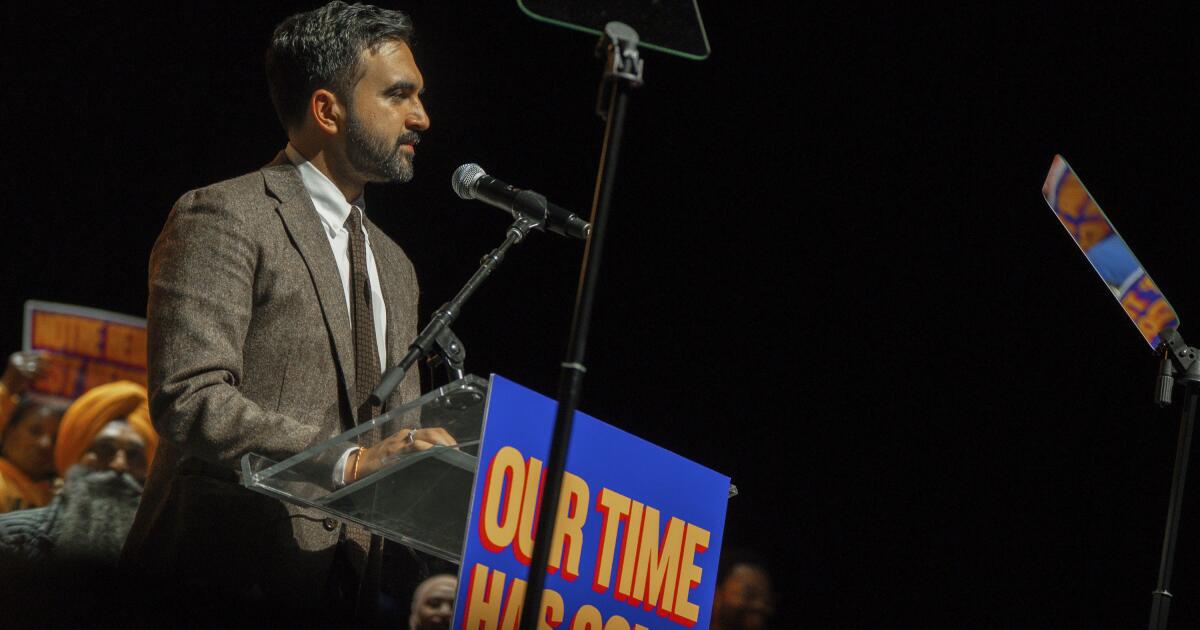SAFE and SOUND : Behind the Proliferation of Private Home Security Services: Proposition 13–and Fear Itself
Brian O’Connor thinks part of his success is due to California voter approval of Proposition 13, the landmark property tax reduction proposal that catalyzed the taxpayer revolt more than a decade ago.
He is the general manager of the Bel-Air Patrol, which operates Los Angeles’ oldest private residential security patrol service. Since Proposition 13, the company has greatly expanded its territory and number of clients, he said.
Business is good and getting better for a growing number of such companies that deploy armed and unarmed guards to watch over Southern California neighborhoods. In fact, such businesses are growing all over the nation.
Residential guard services are a fast-growing segment of the security guard business, says Robert McCrie, editor of Security Letter, a trade publication. He estimated that residential guard services account for 10% to 15% of the nation’s $6.5-billion annual security guard bill. “The growth has been quite unmistakable since World War II. One reason is that people simply feel afraid,” said McCrie, who is also a professor of security management at New York’s John Jay College of Criminal Justice.
More Seek Permits
The public’s perception that government services have declined in California since the passage of Proposition 13 adds to the fear, O’Connor said. People feel that their local police departments are stretched too thin, he said. “The police obviously have to prioritize where they concentrate their effort,” he said.
People also want more control of their personal safety, he said. The average homeowner can’t control the police, but he can hire and fire private security firms at will, he said.
Within the city of Los Angeles, about 50 firms have Los Angeles Police Department permits to offer residential patrol service. Many more operate in the county, and “there may be some operating illegally (in Los Angeles),” said Det. Richard Rudell, chief of the permit section of the Los Angeles Police Commission.
Rudell said he has noted a steady increase in the number of firms applying for permits in recent years, although “some have subsequently gone out of business.” Every year, a number don’t renew their permits, he says.
Security guards do not have police powers. For example, guards patrolling a neighborhood may not detain someone believed to be acting suspiciously, said Lt. Fred Nixon, a Los Angeles Police Department spokesman.
Like anyone, they may make a citizen’s arrest of a person caught committing a crime. Guard companies claim that their presence deters crime, but independent statistical studies aren’t available to verify that claim.
“The police department believes that a highly visible patrol tends to deter crime,” Nixon said. “That is not a vote for or against private patrols. (The patrol) is only part of the equation.”
Private companies offer different levels of services. The larger security alarm companies provide armed guards to respond to an alarm. Other services simply drive through a neighborhood, or by an individual residence, or stop and inspect the exterior of properties. Still others provide mail and newspaper pickups for clients who are out of town and an escort service for clients fearful of entering an empty house after being away for a period.
Added Problems
Although the concept of security patrols seem simple, it’s not that easy for small operators–who are the vast majority of patrol businesses–to make a patrol service a success, said Robert Rockwell, a Walnut Creek, Calif., security management consultant.
Patrol services have all the challenges of hiring and supervising personnel as other guard companies, he said, with the additional burden of purchasing and maintaining vehicles that are driven constantly, he said. They also have the complication of getting a sufficient client base and calculating patrol routes under a price structure that will produce a profit, he said.
Because of the complications, many of the nation’s largest providers of security guards have shied away from that segment, he said, although many will provide a stationary guard for an apartment building, or gated community. (The largest segment of the security guard business is providing on-site guards for businesses and factories.)
Many larger companies that offer residential patrols are essentially in the business of selling security alarms.
Rockwell is also vice president of California Contract Security Guard Service, a trade group of 125 companies. “Very few of our members are involved,” he said.
Most residential patrols are small, perhaps operating with two or three people, he said. “One guy starts a patrol business where he does the patrols himself. Then he hires somebody else to take (another) shift,” Rockwell said.
Thomas Walthen acquired residential patrols in 30 cities across the country, including one in Los Angeles, when his Van Nuys-based California Plant Protection bought the venerable Pinkerton Security Service in 1987, creating a tie between CPP/Pinkerton and Borg-Warner’s security business as the nation’s largest provider of security guards.
High Accident Rate
(Borg-Warner includes Burns International Security Services, Wells Fargo Guard Services and Baker Industries, the parent of the Bel-Air Patrol). The acquisition put Walthen in a business segment that he abandoned 20 years ago. Unlike many services in the old days, Pinkerton has developed a “substantially sophisticated patrol service,” Walthen said.
Nevertheless, he added, “We’re still in the process of evaluating the operation. It looks like a profitable arm,” he said. But there are some problems. “The ratio of accidents to miles driven seem to be terribly out of line,” he said, and nobody seems to know why.
Although relatively big companies are in the minority among those offering residential patrols, they are among the best known in Southern California. A familiar sight throughout affluent neighborhoods are lawns and gardens sprouting signs for Bel-Air, MacGuard Security Services and Westec Security, a unit of Japan’s SECOM Co. All three sell alarm systems and offer armed response to alarms as well as neighborhood patrols.
“We’re not a security guard company. We sell a concept of security,” said Westec President Michael Kaye, explaining how the company’s alarm systems interact with a staff of almost 800 people. About 200 are guards on patrol. The company views itself as playing an “observe and report” role for the police. However, he said, the company plays a crucial prevention role.
“We’ve found time and time again that if a patrol is in a neighborhood, there is less crime. Burglars are basically lazy and will take the path of least resistance,” he said. Westec cites the experience of three Westside communities where it has tracked crime statistics before and after patrols.
Incidents Drop
One area with 400 homes had several burglaries a month before Westec began patrols seven years ago. Since patrols started, there have been no more than three burglaries a year and only one in 1988. Another neighborhood with 500 homes reported seven to 10 robberies a month before the patrols, the company said, but in the nine years of patrols, there have been less than six a year. Thus far in 1988, there have been three incidents.
A community of 250 homes reported several burglaries a month before the Westec patrols began seven years ago, the company said, but has had no more than two per year since. There haven’t been any incidents reported in 1988, the company said.
“We’re in the public relations and protection business,” said O’Connor, the retired British policeman who runs Bel-Air Patrol. “We’re never in conflict with law enforcement because we aren’t in that business,” he added.
Justin Herbert and Chargers dominate in victory over Vikings
In four days, the Chargers’ defense went from rattled to relentless.
The Minnesota Vikings were the victims, unable to move the ball Thursday night against a unit that looked shaky and unsure of itself in a humbling loss to Indianapolis the previous Sunday.
That, along with the consistently excellent play of quarterback Justin Herbert and a solid ground attack, paved the way for a 37-10 victory by the Chargers before a national audience.
The game marked the first time the Chargers scored 30 points or more. They didn’t punt all game, something that hadn’t happened since Week 16 of 2021. They had 29 first downs to 12 by the Vikings.
The performance looked much closer to one the Chargers might have turned in last season, when they led the AFC by allowing just 18.5 points per game. In the previous three games, the Chargers had allowed an average of 30.6.
The Chargers turned in the defensive gem without the services of All-Pro safety Derwin James Jr., the team’s leading tackler who left in the first half with an ankle injury. His backup, Tony Jefferson, was hobbled by a hamstring injury, leaving the duties to rookie R.J. Mickens, who had an interception early in the fourth quarter.
The decisive victory propels the Chargers into their mini-bye on a high note, washing away some of the bad taste of three losses in the previous four weeks. Their next game is at the one-win Tennessee Titans on Nov. 2.
That means the Chargers will have more time to heal, vital for a team so banged up.
The Chargers rushed for 207 yards, the most since coach Jim Harbaugh’s first two games with the team last season. Running back Kimani Vidal ran for 117 yards and a touchdown.
Chargers quarterback Justin Herbert throws during the second half against the Vikings on Thursday.
(Eric Thayer / Los Angeles Times)
The emphasis on the run was far more Harbaugh’s style than the 55 pass attempts Sunday in the 38-24 loss to the Colts, when the Chargers spent all game trying to claw their way out of a ditch.
Herbert threw for 227 yards and three touchdowns.
Minnesota was hurting at quarterback with Carson Wentz playing with a brace on his left, non-throwing shoulder. At various times, he was holding his limp arm and wincing on the sideline. He was under near-constant pressure from the Chargers’ pass rush.
Late in the fourth quarter, Wentz was leveled from the blindside by blitzers Cam Hart and Troy Dye. The quarterback lay on the ground in what looked to be excruciating pain for a moment, got up, ran to the sideline and flung his helmet in frustration.
Rookie quarterback Max Brosmer finished the game for the Vikings, who dropped to 3-4. J.J. McCarthy is nursing an injured ankle but is likely to return at quarterback soon.
Chargers safety R.J. Mickens (27) shows his excitement after intercepting a pass from Vikings quarterback Carson Wentz in the second half Thursday.
(Eric Thayer / Los Angeles Times)
Khalil Mack, wearing a brace on his injured elbow, was a nightmare for Vikings blockers and spent much of his time in the Minnesota backfield.
As well as the Chargers played, they got off to a terrible start. On their second snap, Herbert threw a short pass to his left that apparently was intercepted by diving cornerback Isaiah Rodgers and returned for an 18-yard touchdown.
The play was nullified, however, when replays showed the football move when Rodgers hit the ground before climbing to his feet.
Having survived that scare, the Chargers took advantage of their new life with a 14-play drive capped by an eight-yard touchdown reception by rookie Oronde Gadsden II.
Herbert has been pressured and hit more than any NFL quarterback, yet he got much better protection Thursday night, thanks in no small part to the return of left tackle Joe Alt.
Also key was the ball carrying of Vidal, promoted from the practice squad in Week 6 because of injuries to the top two Chargers running backs, Najee Harris and Omarion Hampton. Herbert got some big yardage on scrambles as well.
Vidal would score a touchdown in the second quarter, as would Ladd McConkey, and the Chargers had a 21-3 lead at halftime.
In a bit of near-synchronicity, this came four days after the Chargers trailed Indianapolis, 23-3, at halftime.
Just about everything went well for the home team in the first two quarters, with Herbert completing 14 of 18 passes for 191 yards and a pair of touchdowns. The only blemish was an errant 49-yard attempt by kicker Cameron Dicker, his first miss of the season.
Trump, Xi to meet during the Asia-Pacific Economic Cooperation Summit
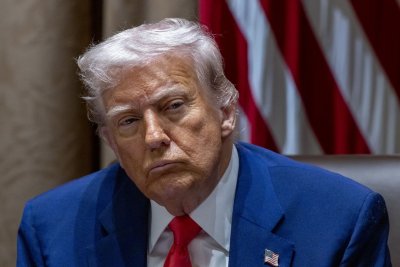
Oct. 23 (UPI) — U.S. President Donald Trump and Chinese President Xi Jinping are to meet and discuss trade and other matters during the Asia-Pacific Economic Cooperation Summit in Busan, South Korea.
Trump is scheduled to leave the United States on Friday, with stops planned in Malaysia and Japan ahead of the APEC conference that has a leaders meeting scheduled for Oct. 31 and Nov.1.
He and Xi agreed to meet on Oct. 30, White House press secretary Karoline Leavitt announced on Thursday.
The planned meeting comes after Trump announced he would impose 100% tariffs on top of existing tariffs on all Chinese-made goods in retaliation for China’s earlier announcement of global restrictions on the use of rare earth minerals.
China dominates the world’s rare earth minerals market and intends to restrict their export and require companies to sign licensing agreements to use them, no matter where those firms might be headquartered.
“We’ll make a deal on everything,” Trump told media while at the Oval Office on Wednesday.
The in-person meeting would be the first between the two since 2019 and could include discussions regarding the war in Ukraine.
Trump said Xi would “like to see that war end,” Politico reported.
The president also anticipates discussing a variety of issues with the Chinese leader, including nuclear power, China’s reliance on Russian oil and trade.
The bilateral summit will be a “pretty long meeting” to enable the two world leaders to “work out a lot of our questions and our doubts,” Trump said, as reported by the South China Morning Post.
Trump will depart the United States late Friday night and arrive in Malaysia on Sunday morning, local time.
“President Trump will participate in a bilateral meeting with the prime minister of Malaysia in the afternoon, and then we will attend the [Association of Southeast Asian Nations] leaders’ working dinner that evening,” Leavitt said.
The president will depart Malaysia on Monday morning and arrive in Tokyo to meet with new Japanese Prime Minister Sanae Takaichi, who is the first woman to be elected to the position.
Following his meeting with Takaichi, Trump will continue to Busan, South Korea, to hold a bilateral meeting with South Korean President Lee Jae Myung ahead of his meeting with Xi.
The president will return to the United States after meeting with the Chinese president, Leavitt said.
Kim Jong Un hails military alliance with Russia, honours Kursk ‘liberators’ | Kim Jong Un News
Kim marked one year since North Korean troops deployed to fight against Ukraine with the opening of a museum.
North Korea’s leader Kim Jong Un has hailed his country’s “invincible” alliance with Russia, as he marked one year since his troops deployed to fight in Moscow’s war against Ukraine with the opening of a museum honouring soldiers who died in battle.
Speaking at the groundbreaking ceremony in the capital Pyongyang on Thursday, Kim addressed the families of North Korean soldiers who “fought in the operations for liberating Kursk”, as he said their deployment to Russia “marked the beginning of a new history of militant solidarity” with Moscow.
Recommended Stories
list of 3 itemsend of list
“The years of militant fraternity, in which a guarantee has been provided for the long-term development of the bilateral friendship at the cost of precious blood, will advance nonstop,” Kim said, according to state news agency KCNA.
Challenges of “domination and tyranny” cannot hinder ties between Russia and North Korea, Kim added.
The event attended by Kim was the latest public honouring of North Korean troops who fought to repel an incursion by Ukrainian forces into Russia’s Kursk region in 2024.
Kim said the museum – which will feature a cemetery, a memorial hall and a monument – dedicated to soldiers in overseas detachments, was the “first of its kind” in North Korean history.
“Today we are holding the groundbreaking ceremony of the Memorial Museum of Combat Feats that will hand down forever the shining life of the heroes and fallen soldiers of the overseas operations units, excellent sons of the Korean people and defenders of justice,” he said.
In October 2024, NATO, the United States and South Korean intelligence agencies said they had evidence that North Korean troops had been deployed to fight alongside the Russian military.
A month later, Kim and Russian President Vladimir Putin officially ratified a mutual defence pact, raising international concern over growing military cooperation between the nuclear-armed states.
The Treaty of Comprehensive Strategic Partnerships obliges both countries to provide immediate military assistance to each other using “all means” necessary if either faces “aggression”.
In April, North Korea confirmed for the first time it had deployed a contingent of soldiers to the front line to fight alongside Russian troops, and its forces had contributed to taking back Russian territory held by Ukraine.
The soldiers were deployed to “annihilate and wipe out the Ukrainian neo-Nazi occupiers and liberate the Kursk area in cooperation with the Russian armed forces”, Kim said at the time, according to KCNA.
Kyiv and Seoul estimate that North Korea deployed more than 10,000 troops in return for economic and military technology assistance from Russia.
Estimates of the casualty rate among North Korean forces have varied widely.
In September, South Korea’s intelligence agency said some 2,000 North Korean soldiers had been killed. In January, Ukraine said North Korean troops were withdrawn from battle after suffering heavy casualties. It was unclear how many North Koreans remain fighting alongside Russian forces.
Earlier this month, Ukraine claimed North Korean troops based in Russia were operating drones across the border on reconnaissance missions, providing the first report in months of North Korean soldiers engaging in battlefield roles.
“The Defence Forces of Ukraine have intercepted communications between North Korean drone operators and personnel of the Russian army,” the Ukrainian General Staff said.
The same week, South Korea’s defence minister said North Korea had likely received technical help from Russia for its submarine development in return for its military efforts against Ukraine.
US Supreme Court to consider whether to hear same-sex marriage case in November
The US Supreme Court has set a date on whether it will hear a case challenging same sex marriage.
Back in July, Kim Davis – who made headlines in 2015 for refusing to issue marriage licenses to same-sex couples – filed a petition for writ of certiorari, appealing two past verdicts that ordered her to pay $100,000 to one of the same-sex couples she denied a marriage license to, and $250,000 in attorney fees.
The filing also urged the Court to overturn the landmark Obergefell v. Hodges ruling, calling it “grounded entirely on the legal fiction of substantive due process.” Davis further claimed that the 2015 decision forced her to choose “between her religious beliefs and her job.”
On 23 October, the Court announced that it had set a date to consider whether to hear the challenge.
According to SCOTUSblog, the nine justices will be meeting in a private conference on 7 November.
The blog went on to reveal that the Court usually grants reviews after two consecutive conferences. The upcoming hearing will be the first for Davis’ case. If the Court denies a review following their meeting on 7 November, an announcement can be released as soon as 10 November.
The recent update comes a week after conservative Supreme Court Justice Amy Coney Barrett – who was appointed to the high court during Trump’s first term– addressed the possibility of Obergefell v. Hodges being overturned.
During a recent conversation with The New York Times‘s Ross Douthat, Barrett said marriage equality has “very concrete reliance interests,” making it unlikely to be taken away.

Ted Eytan on Flickr
She went on to define “reliance interests” as “things that would be upset or undone if a decision is undone.”
Elsewhere in the interview, Douthat inquired if there can be “social reliance interests in the sense of people making life choices on the basis of a right being protected.”
He added: “One of the arguments for why Obergefell v Hodges is unlikely to ever be overturned is the idea that people have made decisions about who to marry and therefore where to live and children… Everything else, on the basis of that ruling.”
In response, Barrett described Douthat’s example as “absolutely reliance interests,” stating that she wouldn’t classify them as “social reliance interests.”
“That kind of sounds like in things in the air. Those are very concrete reliance interests. So those would be classic reliance interests in the terms of the law, in terms of legal doctrine… Those are financial. Those are medical,” she explained.
Another conservative Supreme Court Justice who shared a similar opinion is Samuel Alito. While speaking at an academic conference on 3 October, he said that marriage equality is “entitled to respect,” despite his dislike of the Obergefell v. Hodges ruling.
For information about the status of marriage equality in the US, click here.
Jobs and economic struggles of Californians light up central to clash between candidates for governor
STOCKTON — Four of California’s gubernatorial candidates tangled over climate change and wildfire preparedness at an economic forum Thursday in Stockton, though they all acknowledged the stark problems facing the state.
Riverside County Sheriff Chad Bianco, a Republican, stood apart from the three other candidates — all Democrats — at the California Economic Summit by challenging whether the spate of devastating wildfires in California is linked to climate change, and labeling some environmental activists “terrorists.”
After a few audience members shouted at Bianco over his “terrorists” comment, the Democratic candidates seized on the moment to reaffirm their own beliefs about the warming planet.
“The impacts of climate change are proven and undeniable,” said Tony Thurmond, a Democrat and California superintendent of public instruction. “You can call them what you want. That’s our new normal.”
The fires “do have a relationship with climate change,” said former Los Angeles Mayor Antonio Villaraigosa.
Besides environmental issues, the hour-and-a-half forum at the business-centric California Forward’s Economic Summit focused primarily on “checkbook” topics as the candidates, which also included former state Controller Betty Yee, offered gloomy statistics about poverty and homelessness in California.
Given the forum’s location in the Central Valley, the agricultural industry and rural issues were front and center.
Bianco harped on the state and the Democratic leaders for California’s handling of water management and gasoline prices. At one point, he told the audience that he felt like he was in the “Twilight Zone” after the Democrats on stage pitched ways to raise revenue.
Other candidates in California‘s 2026 governor’s race, including former Secretary of Health and Human Services Xavier Becerra and former Rep. Katie Porter, were not present at Thursday’s debate. Former Assembly Majority Leader Ian Calderon planned to come, but his flight from Los Angeles was delayed, audience members were told.
All are vying to lead a state facing ongoing budget deficits caused by overspending. A state Legislative Analyst’s Office report released this month cited projected annual operating deficits ranging from roughly $15 billion to $25 billion through 2029. At the same time, federal cutbacks by the Trump administration to programs for needy Californians, including the state’s Medi-Cal healthcare program, will put more pressure on the state’s resources.
All of the candidates had different pitches during the afternoon event. Asked by moderator Jeanne Kuang, a CalMatters reporter, about ways to help rural communities, Thurmond cited his plan to build housing on surplus property owned by the state. He also repeatedly talked about extending tax credits or other subsidies to groups, including day-care providers.
Yee, discussing the wildfires, spoke on hardening homes and creating an industry around fire-proofing the state. Yee received applause when she questioned why there wasn’t more discussion about education in the governor’s race.
Villaraigosa cited his work finding federal funds to build rail and subway lines across Los Angeles and suggested that he would focus on growing the state’s power grid and transportation infrastructure.
Both the former mayor and Yee at points sided with Bianco when they complained about the “over-regulation” by the state, including restrictions on developers, builders and small businesses.
Few voters are probably paying much attention to the contest, with the battle over Proposition 50 dominating headlines and campaign spending.
Voters on Nov. 4 will decide whether to support the proposition, which is a Democratic-led effort to gerrymander California’s congressional districts to try and blunt President Trump’s attempt to rig districts in GOP-led states to retain control of the House of Representatives.
“Frankly, nobody’s focused on the governor’s race right now,” Yee said at an event last week.
Celtic motor but still long road ahead for Rodgers
Brendan Rodgers got the response he was looking for after criticising his Celtic players after their defeat at Dundee.
Source link
Anglican archbishop accused of sexual misconduct, abuse of power

A representative of the Anglican church wears a crucifix during a press conference in Canberra, Australia, in 2018. The U.S. Anglican archbishop, Stephen Wood, has-been accused of sexual misconduct and abuse of power. File Photo by Lukas Coch/EPA
Oct. 23 (UPI) — The U.S. Anglican archbishop has been accused of sexual misconduct and abuse of power, according to a recently filed complaint.
Stephen Wood, 62, has been accused by a former children’s ministry worker of putting his hand on the back of her head and attempting to kiss her in his office in April 2024. The alleged incident happened two months before Wood ascended to the church’s top post, The Washington Post reported.
The woman, Claire Buxton, also accused Wood of unexpectedly giving her approximately $35,000 from church coffers before he made the alleged advance. Wood, the father of four children, remains the rector of St. Andrew’s Church in Charleston, S.C., and a bishop who oversees more than 40 churches across the southern United States.
Woods stands to be defrocked and forced to resign if his case goes to an ecclesiastical trial.
Woods issued a statement but refused to answer questions about the alleged incident.
“I do not believe these allegations have any merit,” he said in the statement. “I place my faith and trust in the process outlined in our canons to bring clarity and truth in these matters and respectfully decline to comment further at this time.”
In her statement to the Post, Buxton accused Wood of calling her “Claire Bear” in front of other people and offered to send her to a resort for spa treatments and relaxation.
“I was literally trapped in a church that felt like hell,” Buxton told The Post. She said she turned her face to avoid the kiss and immediately told a colleague about the incident.
“He put his hand on the back of my head and tried to turn it up towards him while he slowly brought his face towards my face to kiss me,” she wrote in her affidavit. “I dropped my face down towards his shoulder so he couldn’t. He held for a second and then let go, and I said, ‘Ok, bye,’ and ran out of his office.” The Post reported that at least four other church employees voiced concerns about Wood’s behavior.
The allegations against Wood come as the ecclesiastical trial of another denominational leader, Bishop Stewart Ruch, draws to a close. Ruch oversees a diocese in the Midwest and has been accused by parishioners and clergy of responding slowly to allegations against a lay leader, Mark Rivera, of abuse and grooming.
Rivera has been convicted of felony child sexual abuse. He pleaded guilty to felony sexual assault in a different case. A verdict in Ruch’s ecclesiastical trial is expected later this year.
UK defence secretary sends warning to Putin over submarines
Jonny BealeDefence correspondent, Lossiemouth
 BBC
BBCDefence Secretary John Healey has a message for Russian President Vladimir Putin: “We’re hunting your submarines.”
There has been a “30% rise in Russian vessels threatening UK waters”, he says.
This, according to Healey, is evidence of increased “Russian aggression right across the board” which he says is impacting Europe, not just Ukraine.
The Ministry of Defence says Russian submarine activity in the North Atlantic is now back to the same levels as the Cold War era.
The RAF and Royal Navy have been stepping up their watch of the North Atlantic, where Russian submarines are most active. The RAF is flying missions most days, sometimes around the clock and often reinforced by other Nato allies.
BBC News joined the defence secretary on a flight on one of the RAF’s new P-8 aircraft – the first media to be allowed to observe an active mission.
Members of the nine-strong crew face banks of monitors – showing them what’s happening both on and under the surface of the water.
It is, in effect, a high-tech spy plane, which is one reason why we’re not allowed to film or photograph any of the screens.
From the outside the P-8 may look like an airliner, just painted grey and with fewer windows. It is in fact the airframe of a Boeing 737, but inside it’s fitted out with sophisticated cameras and sensors and listening devices.

Observing the crews at work, Healey tells me: “Russia is challenging us; it’s testing us; it’s watching us. But these planes allow us to say to Putin – we’re watching you; we’re hunting your subs.”
At first, the crew track a number of surface vessels, using the aircraft’s cameras to look for any suspicious equipment or activity. At times they’re flying just a few hundred metres above the waves.
Last year, with help of the Royal Navy, an RAF P-8 monitored the Russian spy ship, Yantar, which was reported to be hovering over undersea cables in the Irish Sea.
Western nations are increasingly concerned that Russia might try to sever critical undersea cables as part of its hybrid warfare – causing chaos and disruption to internet communications.
Later, they switch the mission to hunt for submarines. At the back of the aircraft are stored 129 active and passive sonar buoys which can detect underwater sounds.
There’s a loud pop as the buoys are fired automatically. One of the cameras on board shows them falling by parachute into the water. There’s no sign of the torpedoes the aircraft can carry to destroy submarines.
One of the crew admits that finding a submarine is not always that easy.
But they know the signature sound of Russian submarines and are helped by a wider network of underwater sensors. In August the RAF, working with US and Norwegian P-8s, tracked a Russian submarine shadowing an American aircraft carrier, the USS Gerald R Ford, on exercise in the North Atlantic.

‘Time to get more aware’
It is a team sport – and the team is about to get even bigger, as Germany has ordered eight of its own P-8 aircraft. For this flight, Healey has been joined by his German counterpart, Boris Pistorius.
German military personnel have already been training alongside their UK colleagues and for part of this mission there’s a German navy pilot in the cockpit.
Germany plans to frequently fly its own maritime patrols from RAF Lossiemouth – Pistorius tells me why.
“The North Atlantic is crucial, and it’s threatened by Russian nuclear submarines,” he says. “Therefore, we need to know what’s going on here in the deep sea.”
The German defence minister’s presence underlines the deepening defence relationship with the UK. There’s much closer co-operation following the signing of the Trinity House Agreement on defence last year.
Germany is already investing in the UK to build new tanks and armoured vehicles for the British Army. On this visit, Pistorius announced that Germany would be buying UK-made Sting Ray torpedoes for its P-8 aircraft. The two countries are also promising to work together on cyber-security.
Pistorius and Healey have already been leading Europe’s efforts to supply weapons to Ukraine. Now they’re turning their attention closer to home.
Pistorius says every day there is evidence of Russia’s hybrid warfare – “fake news, disinformation, hybrid attacks, the threat to undersea infrastructure”.
He says: “It’s time to get more aware of what’s going on.”
ITV Big Brother fans fume ‘we all saw it coming’ after shopping task mayhem
Big Brother viewers were left fuming as the housemates failed the “easiest task” in the show’s history
ITV Big Brother viewers have fumed “we all saw it coming” after this week’s shopping task was plunged into chaos.
In last night’s episode (October 23), the Big Brother house was transformed into an airport for the weekly task in the hopes of winning a luxury shopping budget.
The housemates were asked to check in as passengers and crew onboard the British Eyeways Flight BB2025 with a number of rules to follow.
Big Brother announced: “Passengers, your destination is a luxury shopping budget but only if you can successfully complete your journey and that might not be as easy as it sounds. Every rule break will extend your flight time meaning a short smooth trip could quickly become a long-haul nightmare.”
Cameron and Feyisola took on the roles of pilot and co-pilot, with Jenny and Sam cabin crew and the remaining housemates as passengers.
Caroline, Richard and Zelah were on a stag do, Farida and Nancy were typical tourists, Elsa and Emily as returning backpackers on their gap year, Tate and Teja were business travellers and Marcus was a single dad.
However, after repeatedly breaking the rules, the flight became longer and longer. With the housemates having to endure over four hours on the flight, they soon quit, reports OK!.
As a result, Big Brother informed the housemates they had failed the task and would be living on basic rations. Fans vented their frustrations on social media, with one viewer stating: “The easiest task in the history of the show and they gave up.”
Another penned: “Well we all saw it coming… they FAILED the shopping task and now it’s basic rations for the lot of them. Hunger games incoming!”.
A third commented: “The easiest task in the history of the show.”
A fourth responded: “Sorry but if I was any of their employers I would be thinking a lot differently about some of them, they couldn’t follow some easy rules for 2 hours? ? ? Actually childish imo.”
Another declared: “I’d be fuming if i were in there following the task. all they had to do was f*** all and they still failed.” One person echoed: “Basic rations! !”.
During the shopping challenge, regulations stipulated contestants must not consume food that wasn’t allocated to them, whilst luggage had to remain with housemates constantly.
Contestants were also instructed to remain seated on the aircraft whilst the seatbelt indicator was illuminated. They were subsequently required to estimate their landing time without checking clocks.
Nevertheless, following more than two hours, they abandoned their challenge.
With the housemates bracing themselves for meagre provisions, numerous viewers are questioning precisely what this will entail for those within the Big Brother residence.
Big Brother airs Sunday to Friday at 9pm on ITV2 and ITVX.
Infertility Doctor Is Found Guilty of Fraud, Perjury
WASHINGTON — A federal jury convicted an infertility specialist, who admitted inseminating patients with his own semen, of 52 counts of fraud and perjury Wednesday.
On the fourth day of jury deliberations in Alexandria, Va., Dr. Cecil Jacobson was found guilty of lying to women about the identity of the sperm donor used in their artificial insemination procedures and of telling other women that they were pregnant when they were not.
The case has provoked an inbtense debate, raising disturbing ethical questions about medical practices and the doctor/patient relationship and initiating calls for tougher regulation of sperm banks and fertility clinics.
Critics contended that Jacobson’s behavior violated his patients’ right to privacy and their right to be fully informed about their treatments.
Furthermore, the case is expected to prompt action on the federal or state level toward tighter controls on the fertility industry, which is now only loosely regulated. Such legislation is already pending on Capitol Hill.
Jacobson, 55, who may have fathered as many as 75 children in the Washington area during the late 1970s and early 1980s, faces up to 280 years in prison and $500,000 in fines when he is sentenced May 8.
Jacobson showed no reaction when the verdict was delivered but said afterward: “I spent my life trying to help women have children. It’s a shock to be found guilty of trying to help people. . . . I certainly did not willfully or intentionally harm anyone. . . . I did not break any law.”
Prosecutor Randy Bellows, who characterized Jacobson to the eight-woman, four-man jury as “a man who routinely lies to his own patients,” declined to say whether he would recommend that Jacobson go to jail.
Jacobson, who remains free on bond, is expected to appeal.
Jury foreman Daniel Richard told reporters gathered outside the courtroom that “we knew Jacobson was lying to those patients.” Another juror, Deborah Earman, said that she believed Jacobson “was a good man” who “went wrong somewhere and mistreated a lot of women. He definitely did some wrong.”
Jean Blair, a former patient who testified that Jacobson had told her six times that she was pregnant and had miscarried, said she hopes that Jacobson goes to jail. Her husband, James Blair, said Jacobson “fooled a lot of people for a long time and I’m glad he didn’t fool this jury.”
Jacobson is a former George Washington University geneticist believed to have been the first physician to perform amniocentesis in the United States. For a long time, he was one of only a few practitioners in the Washington area who could perform the prenatal procedure, which detects Down’s syndrome and other abnormalities in a developing fetus.
Later, Jacobson opened his Reproductive Genetics Center Ltd. It was while treating women there that the incidents for which he was charged occurred. In addition to lying to them about the source of the semen he used, he was also charged with fooling 10 women into thinking that they were pregnant by injecting them with unusually frequent doses of a hormone that he knew would create false positive results in a pregnancy test. Later, the prosecutor charged, he told the women that their fetuses had died and been reabsorbed by their bodies.
A series of witnesses–who testified anonymously out of concern for their children–said that Jacobson had told them he would find donors who would match the physical characteristics of the patients’ husbands and that the donor would not be aware of their identity. Genetic tests on 15 of the children, however, showed that Jacobson was 99.99% likely to have been the father, the prosecution said.
But defense attorney James Tate argued that Jacobson had been very successful in helping many high-risk women become pregnant and give birth to healthy babies. Jacobson, testifying in his own behalf, said he was unaware that the hormone he was using could cause false positive pregnancy test results.
In comments made before the trial, Jacobson acknowledged that he had used his own semen, saying that he did not believe he had done anything wrong. He said that he believed his own fresh semen was more effective than a bank’s frozen sperm. And, he said, because he had been faithful to his wife, he was confident he would not transmit any dangerous infectious diseases to his patients.
There is some evidence that Jacobson’s actions, while unusual, were not isolated. The results of a 1987 survey conducted by the federal Office of Technology Assessment–virtually ignored at the time–showed that as many as 2% of the fertility doctors polled had done exactly the same thing as Jacobson, using their own sperm to inseminate patients.
In a separate case several years earlier, Jacobson was prohibited from practicing clinical medicine in Virginia after the state medical board determined that he had misled women who had paid $5,000 for fertility treatments. Jacobson, a native of Utah, returned there to conduct privately funded genetic research.
Dodgers’ Alex Vesia might miss World Series because of personal matter
TORONTO — The Dodgers announced Thursday that reliever Alex Vesia is away from the team as he and his wife “navigate a deeply personal family matter,” and manager Dave Roberts said his availability for the World Series is uncertain.
Vesia, who has been the Dodgers’ top left-handed pitcher in the bullpen this season, was not present at the team’s World Series media session on Thursday, and was not seen at the club’s open workout at Dodger Stadium on Monday.
Roberts said that the club was reviewing its options within MLB’s postseason roster rules, but that for now Vesia’s status was considered day-to-day.

“We have a little bit of time — I think 10 o’clock tomorrow or something like that — to finalize our roster,” Roberts said. “But, yeah, we’re going through the process of trying to backfill his spot on the roster.”
One potential option for the Dodgers would be to place Vesia on MLB’s Family Medical Emergency List, which would require him to miss a minimum of three days but make it possible for him to rejoin the active roster later in the World Series.
For now, however, Roberts said “we’re just going day-to-day with really no expectations.”
In the Dodgers’ team statement, the club said “the entire Dodgers organization is sending our thoughts to the Vesia family.”

As Trump makes rare visit to Malaysia, PM Anwar’s balancing act faces test | Donald Trump News
Kuala Lumpur, Malaysia – When US President Donald Trump lands in Malaysia for Southeast Asia’s headline summit this weekend, he will be delivering Malaysian Prime Minister Anwar Ibrahim a diplomatic coup.
US presidents rarely visit Malaysia, a multiracial nation of 35 million people sandwiched between Thailand and Singapore, which for decades has maintained a policy of not picking sides in rivalries between great powers.
Recommended Stories
list of 3 itemsend of list
Trump is just the third US leader to travel to the Southeast Asian country, which is hosting a Sunday-to-Tuesday summit for the Association of Southeast Asian Nations (ASEAN), following visits by former US Presidents Barack Obama and Lyndon B Johnson.
After skipping ASEAN summits in 2018, 2019 and 2020, Trump, whose disdain for multilateralism is renowned, will be attending the gathering of Southeast Asian nations for just the second time.
The US president will be joined by a host of high-profile leaders from non-ASEAN countries, including Japanese Prime Minister Sanae Takaichi, Brazilian President Luiz Inacio Lula da Silva, and South African President Cyril Ramaphosa.
Opting not to attend are Indian Prime Minister Narendra Modi, Russian President Vladimir Putin, and Chinese President Xi Jinping, who Trump is expected to meet in South Korea at next week’s Asia-Pacific Economic Cooperation (APEC) summit.
Trump’s visit, in many ways, is emblematic of the delicate balancing act that Anwar’s government has sought to maintain as Malaysia navigates the headwinds of the heated rivalry between the US and China.
Malaysia is deeply entwined with both the US and Chinese economies.
The US, which has a large footprint in Malaysia’s tech and oil and gas industries, was the Southeast Asian country’s top foreign investor and third-biggest trading partner in 2024.
China, a major purchaser of Malaysian electronics and palm oil, the same year took the top spot in trade and was third for investment.
But Malaysia’s efforts to walk a fine line between Washington and Beijing have become increasingly fraught as the superpowers roll out tit-for-tat tariffs and export controls while butting heads over regional flashpoints such as Taiwan and the South China Sea.

“Optimally, Malaysia wants to productively engage both China and the US on a variety of issues,” said Thomas Daniel, an analyst at the Institute of Strategic & International Studies in Kuala Lumpur.
“It is in our interest,” Daniel told Al Jazeera.
Anwar has cast Trump’s visit as a chance to bolster economic ties, champion regional peace and stability, and elevate ASEAN’s standing on the international stage.
Anwar has also pledged to use the rare opportunity for face time with Trump to constructively raise points of difference between Washington and Kuala Lumpur, particularly the Palestinian cause.
“The through-line is autonomy: avoid entanglement, maximise options, and extract benefits from both poles without becoming anyone’s proxy,” Awang Azman Awang Pawi, a professor at the University of Malaya, told Al Jazeera.
During Trump’s visit, US tariffs on Malaysia, currently set at 19 percent, and China’s mooted export controls on rare earths are expected to be high on the agenda.
For Malaysia, the priority is preserving “rules-based” trade that allows for countries to deepen economic ties despite their political differences, said Mohd Ramlan Mohd Arshad, a senior lecturer at the MARA University of Technology in Shah Alam, near Kuala Lumpur.
A prolonged economic cold war between the US and China is the “worst thing” that could happen to Malaysia, Arshad told Al Jazeera.
Trump, who has made no secret of his ambitions for the Nobel Peace Prize, is also expected to witness the signing of a peace accord between Thailand and Cambodia, which engaged in a brief border conflict in July that left at least 38 people dead.
For Anwar, who has led a multiracial coalition of parties with diverse and competing interests since 2022, the balancing act also involves political considerations at home.

US support for Israel’s war in Gaza has been a bone of contention in Muslim-majority Malaysia, where the plight of Palestinians has inspired frequent public protests.
In the run-up to the summit, critics have demanded that Anwar rescind Trump’s invitation over his role in supporting the war, which a United Nations commission of inquiry last month determined to constitute genocide.
“A person like Trump, no matter how powerful, should not be welcomed in Malaysia,” former Prime Minister Mahathir Mohamad, Anwar’s former mentor-turned-nemesis, said in a video message last month.
Defending the invitation, Anwar has stressed his view of diplomacy as “practical work” for advancing his country’s interests “in an imperfect world”.
“It demands balance, discipline, and the courage to stay the course even when the ground shifts beneath us,” he told a conference in Kuala Lumpur earlier this month.

As a small power, Malaysia has always put pragmatism at the centre of its foreign policy, said Sharifah Munirah Alatas, an international relations lecturer at the National University of Malaysia.
“Anwar and Malaysia cannot afford to do otherwise,” Alatas told Al Jazeera.
“And given the current highly unpredictable Sino-American tension induced by the Trump 2.0 era, ASEAN will remain actively non-aligned, without taking sides.”
Awang Azman, the University of Malaya professor, said that while Trump’s visit will elevate Malaysia and ASEAN’s profile by itself, the true test of the summit’s success will be tangible outcomes on issues such as the Thailand-Cambodia conflict and trade.
“It’s not just a photo op if a ceasefire accord and concrete trade language land on paper,” Awang Azman said.
“If either track stalls, the visit is still symbolically significant – given the rarity of US presidential trips to Malaysia – but the narrative will revert to optics over outcomes.”
Air Force’s Crop Duster Converted Into Attack Plane Crash Lands In Field
One of U.S. Air Force Special Operations Command’s new OA-1K Skyraider II light attack aircraft crashed today, not far from Will Rogers International Airport in Oklahoma, where the type is based as part of a partnership between the 492nd and 137th Special Operations Wings. Both crew members onboard — a contractor and an active-duty service member — were not injured in the incident, thankfully.
Images of the Skyraider II sitting damaged in a field began circulating on social media this afternoon.
The Oklahoma Air National Guard says that the aircraft was out on a training mission when the incident occurred and that the circumstances are currently under investigation.
The OA-1K is brand new to the USAF’s inventory, with the type fulfilling what is something of the final culmination of a long string of aborted requirements for a light attack aircraft specially configured for low-intensity missions, such as counter-terrorism and counter-insurgency operations. A synopsis of the OA-1K from a previous TWZ article on its official naming can be read below:
The two-seat OA-1K can carry up to 6,000 pounds of munitions and other stores, including precision-guided missiles and bombs and podded sensor systems, on up to eight underwing pylons. L3Harris has previously said the aircraft can fly out to an area up to 200 miles away and loiter there for up to six hours with a typical combat load. They also have a “robust suite of radios and datalinks providing multiple means for line-of-sight (LOS) and beyond line-of-sight (BLOS) communications,” according to the company.
AFSOC currently plans to acquire 75 Skyraider IIs, with the first example to be delivered this spring. The turboprop-powered OA-1K, a militarized derivative of the popular Air Tractor AT-802 crop duster, is a tail-dragging design like the much larger piston-engined Skyraider. The Skyraider II is set to be the first tail-dragging tactical combat aircraft anywhere in U.S. military inventory in decades.”
You can also check out our exclusive tour of the aircraft in the video below:

It’s quite possible the aircraft’s crop-duster roots helped keep the airframe and its crew intact when it came down in the field, as it’s built to operate from rough fields even in its suped-up military configuration.
We will update this post with any new information that becomes available in the next 24 hours about the mishap.
Contact the author: [email protected]
Bob Dylan was a phenomenon, his songs said the things I wanted to, admits folk legend Joan Baez

ON Christmas Eve, 1956, a 15-year-old boy heads due south on a five-hour Greyhound Bus journey from his home in Hibbing, Minnesota.
Arriving in the state capital, Saint Paul, he meets up with two summer camp friends and they go to a shop on Fort Road called Terlinde Music.
Styling themselves as The Jokers, the fledgling trio record a rowdy, rudimentary 36-second rendition of R&B party hit Let The Good Times Roll and a handful of other covers.
The boy, with his chubby cheeks and hint of a rock and roller’s quiff, leads the way on vocals and piano.
Already enthralled by popular sounds of the day from Elvis Presley to Little Richard and the rest, he is now in proud possession of a DIY acetate — his first precious recording.
His name is Robert Allen Zimmerman, Bobby to his family and friends.
Less than seven years later, on October 26, 1963, as Bob Dylan, he takes to the stage in the manner of his folk hero Woody Guthrie, now adopting an altogether more lean and hungry look.
Acoustic guitar and harmonica are his only props as he holds an audience at New York City’s prestigious Carnegie Hall in the palms of his hands.
He performs his rallying cries that resonate to this day — Blowin’ In The Wind, The Times They Are A-Changin’, A Hard Rain’s A-Gonna Fall.
He calls out the perpetrators of race-motivated killings with The Lonesome Death Of Hattie Carroll and Only A Pawn In Their Game.
He dwells on matters of the heart by singing Don’t Think Twice, It’s All Right and Boots Of Spanish Leather.
His 1956 schoolboy shindig and the Carnegie Hall concert, presented in full for the first time, bookend the latest instalment in Dylan’s endlessly captivating Bootleg Series.
Titled Through The Open Window, it showcases an artist in a hurry as he sets out on his epic career.
“I did everything fast,” he wrote in his memoir, Chronicles Vol.1, about his rapid transformation. “Thought fast, ate fast, talked fast and walked fast. I even sang my songs fast.”
But, as he continued: “I needed to slow my mind down if I was going to be a composer with anything to say.”
Among the myriad ways he achieved his stated aim, and then some, was by heading to the quiet surroundings of New York Public Library and avidly scouring newspapers on microfilm from the mid-1800s such as the Chicago Tribune and Memphis Daily Eagle, “intrigued by the language and the rhetoric of the times”.
He’d fallen under the spell of country music’s first superstar Hank Williams — “the sound of his voice went through me like an electric rod”.
Dylan affirmed that without hearing the “raw intensity” of songs by German anti-fascist poet-playwright Kurt Weill, most notably Pirate Jenny, he might not have written songs like The Lonesome Death Of Hattie Carroll.
Then there was Mississippi Delta bluesman Robert Johnson, who Dylan likened to “the scorched earth”. “There’s nothing clownish about him or his lyrics,” he said. “I wanted to be like that, too.”
‘Did everything fast’
We’ll hear more later about the man considered to be his primary early influence, Woody Guthrie, the “Dust Bowl Balladeer” who wielded a guitar emblazoned with the slogan “This machine kills fascists”.
And about leading Greenwich Village folkie Dave Van Ronk, known as the “Mayor Of MacDougal Street”, who had Dylan’s back from the moment he first saw him sing.
On two occasions in recent years, I’ve had the privilege of talking to Joan Baez, the unofficial “Queen” to Dylan’s “King” of the American folk scene in the early Sixties.
She championed him as he made his way, frequently bringing him on stage, their duets on his compositions like With God On Our Side revealing rare chemistry.
They also became lovers as Bob’s relationship with Suze Rotolo, the girl on the cover of the Freewheelin’ album, crumbled.
“He was a phenomenon,” Baez told me in typically forthright fashion. “I guess somebody said, ‘There’s this guy you gotta hear, he’s writing these incredible songs.’
“And he was. His talent was so constant that I was in awe.”
A leading figure in the civil rights movement, who marched with Martin Luther King, Baez added: “It was a piece of good luck that his music came along when it did. The songs said the things I wanted to say.”
But she finished that reflection by saying, tellingly: “And then he moved on.”
For Dylan, now 84, has forever been a restless soul, “moving on” to numerous incarnations — rock star, country singer, Born Again evangelist, Sinatra-style crooner, old-time bluesman, you name it.
In the closing paragraph of Chronicles, he admitted: “The folk music scene had been like a paradise that I had to leave, like Adam had to leave the garden.”
But it is that initial whirlwind period, 1956 to 1963, centred on bohemian Greenwich Village and the coffee shops where young performers got their breaks which forms Volume 18 of the Bootleg Series.
Through The Open Window is available in various formats including an eight-CD, 139-track version, and has been painstakingly pieced together by co-producers Sean Wilentz and Steve Berkowitz.
And it is from Wilentz, professor of American history at Princeton University and author of the liner notes accompanying this labour of love, that I have gleaned illuminating insights.
I can’t think of too many modern artists of his stature, if any, who developed that rapidly
Sean Wilentz
He begins with the arc of Dylan’s development, first as a performer, then as a songwriter, during his early years.
Wilentz says: “He came to Greenwich Village in 1961 with infinite ambition and mediocre skills. By the end of that year, he had learned how to enter a song, make it his own, and put it over, brilliantly.
“By the end of 1962, he had written songs that became immortal, above all Blowin’ In The Wind and A Hard Rain’s A-Gonna Fall.
“By the time of the Carnegie Hall concert in 1963, the capstone to Through The Open Window, his songwriting had reached the level we can recognise, that would eventually lead to the Nobel Prize.
“And his performance style, for the thousands in that hall, was mesmeric. I can’t think of too many modern artists of his stature, if any, who developed that rapidly.”
One of the show’s striking aspects is the lively, often comical, between-song banter. (Yes, Dylan did talk effusively to his audiences back then. Not so much these days.)
In order to assemble Through The Open Window, Wilentz and Berkowitz had “more than 100 hours of material to draw on, maybe two or even three hundred”.
Their chief aim was to find a way to best illuminate “Bob Dylan’s development, mainly in Greenwich Village, as a performer and songwriter”.
But, adds Wilentz: “Several factors came into play — historical significance, rarity, immediacy and, of course, quality of performance.
‘Good taste in R&B’
“We hope, above all, that the collection succeeds at capturing the many overlapping levels — personal, artistic, political and more.”
Though noting Dylan’s inspirations, Woody, Elvis and the rest, Wilentz draws my attention to “a bit of free verse” written by Bob in 1962 called My Life In A Stolen Moment, which suggests nothing was off limits.
“Open up yer eyes an’ ears an’ yer influenced/an’ there’s nothing you can do about it.”
This is our cue to take a deep dive into the mix of unheard home recordings, coffeehouse and nightclub shows as well as studio outtakes from Dylan’s first three albums for Columbia Records — his self-titled debut, The Freewheelin’ Bob Dylan and The Times They Are A-Changin’.
Of the first track, that primitive take on Let The Good Times Roll, Wilentz says: “Dylan and the other two were obviously enthusiastic, and they had good taste in doo-wop and R&B.
“But if you listen closely, you can hear Dylan, on piano, calling things to order and pushing things along, the catalyst, the guy we know from other accounts who was willing to take more risks onstage.”
I ask Wilentz what he considers the most significant previously unreleased discoveries and he replies: “Most obviously Liverpool Gal from 1963, as it’s a song even the most obsessive Dylan aficionados have known existed but had never heard.
“He only recorded it once, at a friend’s party, and it’s stayed locked away on that tape until now.
Dylan was producing so much strong material that some of it was inevitably laid aside
Sean Wilentz
“While not Dylan at his peak, it’s a fine song. It’s significant lyrically, not least as testimony to his stay in London at the end of 1962 and the start of 1963. That stay had a profound effect on his songwriting, and one gets a glimpse of it here.”
Also included is near mythical Dylan song The Ballad Of The Gliding Swan, which he performed as “Bobby” in BBC drama Madhouse On Castle Street during his trip to Britain.
The only copy of the play set in a boarding house was junked by the Beeb in 1968 but this 63-second audio fragment survives.
Of even earlier recordings, Wilentz says: “I’m drawn to Ramblin’ Round.
“Although known (in his own words) as a Woody Guthrie jukebox, Dylan has never released a recording of himself performing a Guthrie song.
“Here he is, in an outtake from his first studio album, handling a Guthrie classic, and with a depth of feeling that shows why his earliest admirers found him so compelling.”
Wilentz considers other treasures: “There’s an entire 20-minute live set from Gerdes Folk City from April, 1962, concluding with Dylan’s first public performance of Blowin’ In The Wind.
“Then there are two tracks of singular historic importance, the first known recordings, both in informal settings, of two masterpieces, The Lonesome Death Of Hattie Carroll and The Times They Are A-Changin’.”
If these versions shed fresh light on classics, let’s not forget the great Dylan songs that didn’t make it on to his albums, so great was the speed he was moving.
Does Wilentz find it staggering that songs like Let Me Die In My Footsteps and Lay Down Your Weary Tune were discarded?
“Yes and no,” he answers. “Yes, because these are powerful songs that were left largely unknown for years.
“No, because Dylan was producing so much strong material that some of it was inevitably laid aside.
‘Literary genius’
“Sometimes intervening factors kicked in. Take the four songs that, for business and censorship reasons, got cut from Freewheelin’ and replaced with four others.
“The album was actually better in its altered form, including songs like Girl From The North Country.
“But that’s how Let Me Die In My Footsteps was lost, along with a lesser-known song I love that we’re happy to include, Gamblin’ Willie’s Dead Man’s Hand, as well as an amazing performance of Rocks And Gravel.”
So, we’ve heard about songs but who were the key figures surrounding Dylan during his formative years?
Wilentz says: “Among the folk singers, Van Ronk most of all, and Mike Seeger, about whom he writes with a kind of awe in Chronicles.
“There was the crowd around Woody Guthrie, including Pete Seeger (‘Mike Seeger’s older brother,’ he calls him at one point) and Ramblin’ Jack Elliott.”
He singles out producer John Hammond, “for signing him to Columbia Records and affirming his talent.
“But most important of all there was Suze Rotolo, who was a whole lot more, to Dylan and the rest of the world, than the girl on the cover of The Freewheelin’ Bob Dylan.”
Finally, I ask Wilentz why the singer felt uncomfortable at being labelled king of the folk movement, “the voice of a generation” if you like.
“People misread Dylan from all sides,” he argues. “Never a protest singer in the mould of Guthrie or Seeger, even though he worshipped Guthrie and admired the left-wing old guard by the time he turned up.
“But Dylan wasn’t one of them, though he sympathised, in a humane way, with victims of injustice.”
Dylan’s work springs from a matrix that is emotional, filtered through his literary genius
Sean Wilentz
Wilentz believes the recent biopic A Complete Unknown, with Timothee Chalamet making a decent fist of portraying the young Dylan, “is a little misleading”.
He says: “It wasn’t Dylan’s ‘going electric’ that pissed off the old guard and their younger equivalent as much as his moving beyond left-wing political pieties.
“Hence the song My Back Pages, from 1964: ‘Ah but I was so much older then/I’m younger than that now.’”
Wilentz concludes: “Dylan’s work springs from a matrix that is emotional, filtered through his literary genius.
“It was impossible for someone like him, living through those two years (1962-63), not to respond to the politics in an artistic way.
“How, if you were Bob Dylan, could you not respond to the civil rights struggle, the killing of Medgar Evers (Only A Pawn In Their Game) or Hattie Carroll, as well as the spectre of nuclear annihilation?
“Dylan had a lot to say, but he was never going to be the voice of anyone but himself.”
Maybe he’d already explained himself on Don’t Think Twice, It’s Alright:
“When your rooster crows at the break of dawn
Look out your window and I’ll be gone.”
BOB DYLAN
Through The Open Window
The Bootleg Series Vol.18
★★★★★
I visited one of the UK’s most famous pumpkin patches — it’s brilliant for Halloween
Halloween is a big deal in the UK, and one of the most famous pumpkin patches is Tulleys’ Pumpkin Farm, which plays host to a pumpkin festival each year
Halloween certainly feels different now that I’m on the cusp of 30, but my memories of past celebrations vary greatly. As a child, I spent Halloween trick or treating around my village, while my university years were marked by celebrating a Halloween birthday, reports the Express.
Now, in my mature years, it’s all about recreating a sense of nostalgia. I’ve never been particularly drawn to the Americanised version of Halloween, even less so as an adult (what on earth is a Boo Basket?). However, one tradition that remains constant is the art of pumpkin carving.
Last weekend, I embraced the Halloween spirit slightly more than usual, visiting one of the UK’s most renowned pumpkin patches and festivals. Tulleys’ Pumpkin Farm in West Sussex has a rich history of embracing all things autumnal and Halloween-related. Each year, it hosts Tulleys’ Pumpkin Festival, Tulleys’ Pumpkin Nights, and Shocktober Fest.
Shocktober Fest was a big deal during my teenage years, along with Thorpe Park’s Fright Night, with hordes of friends making the journey across county borders to scream into the night. Tulleys’ Farm has been around for quite some time, because when I mentioned to my mum that I was heading to the Pumpkin Festival, she gasped, recalling that it was a place she used to visit with her parents when she was younger. That surely means it’s legendary.
Two Irish mates were keen to embrace the Halloween spirit, and as their London tour guide, I was more than happy to whisk us away from the city with their Golden Retriever, Millie, for a soggy afternoon in a muddy field brimming with pumpkins. The relentless downpour and heavy grey skies only added to the autumnal atmosphere.
The Pumpkin Festival is a blend of traditional British farms and Colonial America – think Salem Witch Trials – teeming with hundreds, if not thousands, of different types of pumpkins and squash. Ever seen a star-shaped pumpkin? Well, now’s your chance.
You’ll encounter knobbly ones, wrinkled ones, green ones, white ones, big ones, small ones, striped ones. They’re absolutely mad about pumpkins.
There’s an entire field dedicated to capturing that perfect pumpkin patch Instagram snap, with row upon row of vibrant orange pumpkins. Over 600,000 seeds are sown across 100 acres of land to yield one million pumpkins and gourds for the festival.
It’s the ideal spot to wear out kids or four-legged friends while you wander amongst the field. Personally, I enjoyed perusing the plethora of pumpkins in the garden centre/pumpkin-village.
You can purchase as many as you like, and plenty of people were carting them around in wheelbarrows. Prices vary depending on size, and the most unusual variety could set you back as little as £1.
We acted like proper Millennials, ensuring that Millie was the centre of attention, snapping pictures of her like mums and dads do with their little ones and tots. She adored it, I’m certain.
Next to the pumpkin patch sits the American-style village, complete with typical Yankee street grub, a dive bar plastered in memorabilia that screams “USA! USA!”, a big wheel, and a mock cemetery showcasing cringe-worthy spooky dad gags.
The entire setup is part of the charm, designed to whisk you away from dull West Sussex to Salem, Massachusetts, 1692. You’ve got to chuckle at it. But honestly, it’s all part of the entertainment.
The Pumpkin Bar serves as an excellent refuge, and believe me, you’ll likely need it. There are also loads of food choices, though my selection of chips with cheese sauce probably wasn’t the wisest pick. I should have opted for the build your own crumble or DIY s’mores. It’s the ideal spot to get you and the clan in the spirit for spooky season.
Tulleys provides a complete experience for young and grown-up children alike. It was my first experience at a pumpkin patch as an adult, and despite resembling a soaked rodent from the instant we turned up, it was the perfect way to spend a weekend.
Tulleys left my mates so impressed that they’re keen to tackle the two other Halloween attractions next year. There’s something extraordinary for the whole family to enjoy, even the four-legged variety.
Daytime tickets for Tulleys Farm’s Pumpkin Festival, for adults (over 14) and children (from aged two to 13), are priced between £8 and £13.95, with carers admitted free of charge. For the Pumpkin Nights at Tulleys, prices range from £11.95 to £19.95 for both adults and children.
Friday 24 October Hawke’s Bay Anniversary Day in Hawke’s Bay
Hawke’s Bay Anniversary Day is held on the Friday before Labour Day.
Hawke’s Bay province was created when it was split from Wellington on 1 November 1958. It became a provincial district in 1876.
Hawke’s Bay was named by Captain Cook in honour of Edward Hawke, First Lord of the Admiralty.
This day is also known as ‘Show Day’ as the Friday is the last day of the Royal Agricultural Show.
The Holidays Act 1981 specifies each locality observing a Provincial Anniversary Day to celebrate the founding days or landing days of the first colonists of the various colonial provinces.
However the exact dates are not legislated for.
The regions covered are set by provincial district (as they stood when abolished in 1876), plus Southland, the Chatham Islands, South Canterbury and Northland.
Backing Israel was considered mandatory for New York politicians. Then came Zohran Mamdani
NEW YORK — A few weeks before his stunning loss to Zohran Mamdani in the Democratic mayoral primary, former Gov. Andrew Cuomo put forth a political calculus long accepted as fact in New York: “Being a Democrat,” he said, “it’s synonymous that you support Israel.”
Mamdani, who would be the city’s first Muslim mayor, could be on the cusp of shattering that convention.
An unstinting supporter of Palestinian rights, the 34-year-old democratic socialist has accused Israel of genocide in Gaza, backed the movement to boycott the country’s goods and pledged to have Prime Minister Benjamin Netanyahu arrested if he sets foot in New York.
In a city with the largest Jewish population outside of Israel, where mayors have long been expected to make the long pilgrimage to the Jewish state, Mamdani identifies proudly as an “anti-Zionist.”
While he says he supports Israel’s right to exist, he describes any state or social hierarchy that favors Jews over others as incompatible with his belief in universal human rights.
City officials, Mamdani often points out, have no say in American foreign policy. And he has consistently and emphatically rejected claims that his criticism of Israel amounts to antisemitism, promising to work closely with those whom he doesn’t agree with if elected.
But as Cuomo and others have framed the race as a referendum on Israel, political observers say a Mamdani victory could reverberate far beyond New York, offering permission for Democrats to speak out on an issue long seen as a third rail of politics.
“This race is a proxy for where the party goes from here in terms of support for Israel — and that’s causing a lot of consternation,” said Basil Smikle, a former chief executive of the state’s Democratic Party. “We’re treading in territory that we’ve not really dealt with before.”
The ‘most important’ issue in the race
From the beginning, Cuomo has staked much of his political comeback on painting himself as a defender of Jewish security, both in New York and the Middle East.
Shortly before launching his campaign, he announced that he had joined Netanyahu’s legal defense team to defend the prime minister against war crimes charges brought by the International Criminal Court. He cast antisemitism as the “most important” issue facing the city and himself as a “hyper aggressive supporter of Israel.”
Mamdani’s own views, he said, presented an “existential” threat to New Yorkers.
Other candidates quickly rushed to burnish their own pro-Israel credentials, including Mayor Eric Adams, who announced he would run on an “EndAntisemitism” ballot line.
As they competed for support among Brooklyn’s prominent rabbis and other Jewish voters, each equated protests for Palestinian rights with support for terrorism and backed a contentious definition of antisemitism that includes certain criticism of Israel.
Days before dropping out last month, Adams shared a smiling photo with Netanyahu.
The strategy appeared willfully ignorant of polls showing growing public disapproval in the U.S. of Israel’s prosecution of the war in Gaza, according to Alyssa Cass, a longtime Democratic strategist.
She said a handful of deep-pocketed campaign donors and some city news outlets “created an impression that you could not ever question Israel, and that impression was completely divorced from reality.”
“The unique dynamics in New York were masking a broader, larger migration in public opinion that had been brewing for some time,” Cass added. “They didn’t realize that the ground beneath them had shifted.”
Shifting political winds
Still, with less than two weeks to go before the election, Cuomo has only leaned into the issue, claiming at Wednesday’s debate that Mamdani had “stoked the flames of hatred against the Jewish people.”
The broadsides have won support from the Anti-Defamation League and pro-Israel donors, like the hedge fund billionaire Bill Ackman. But there is little indication that the strategy is working among ordinary New Yorkers.
In a Quinnipiac University poll conducted in early October, 41% of likely voters in New York City said Mamdani’s views on Israel aligned closest with their own, compared to 26% for Cuomo.
A Fox News poll conducted in mid-October found that 50% of registered voters in New York said they identified more with the Palestinians in the Middle East conflict, compared to 44% who identified more with the Israelis.
Those numbers have alarmed some Jewish leaders, who have laid at least some of the blame at Mamdani’s feet. In an open letter circulated this week, 650 rabbis warned that his candidacy has contributed to “rising anti-Zionism and its political normalization.”
Amy Spitalnick, the chief executive of the Jewish Council on Public Affairs, cautioned against drawing a direct link between Mamdani’s popularity and his pro-Palestinian stance.
She noted that most Jewish voters remain strong supporters of Israel, lamenting the fact that neither Mamdani nor Cuomo had articulated “the liberal nuanced perspective that most New York Jews hold.”
“Mamdani’s views on Israel matter, but it’s not the issue on which the majority of New Yorkers are voting,” she added. “If he wins, it’s because he ran a compelling campaign on making this city more affordable.”
Weaponization and authenticity
In debates and interviews, where Mamdani often faces a barrage of questions about his views on the Israel-Hamas war, he is quick to shift the focus to his platform, which includes freezing the rent for regulated apartments, making buses free and lowering the cost of child care.
“I have denounced Hamas again and again,” an exasperated Mamdani said during a debate last week. “It will never be enough for Andrew Cuomo.”
At Wednesday’s debate, Mamdani again spoke of his proposal to increase funding for hate crime prevention and his recent outreach to Jewish voters about their fears of antisemitism.
“They deserve a leader who takes it seriously, who roots it out of these five boroughs, not one who weaponizes it as a means by which to score political points on a debate stage,” he added.
But despite months of vitriolic backlash, Mamdani has stood firm on his core criticism of Israel. In his statement marking the anniversary of the Oct. 7 attacks on Israel, he condemned both Hamas’ “horrific war crimes” and Israel’s occupation, apartheid and “genocidal war” in Gaza.
Whether or not those views are shared by the broader electorate, the consistency of the message has served as “proxy for authenticity” in the minds of voters, according to Peter Feld, a progressive political consultant.
And it has offered a sharp contrast with not only Cuomo, but other pro-Israel Democrats in New York, including Sen. Chuck Schumer and House Minority Leader Hakeem Jeffries. Both have spent weeks rebuffing questions about whether they will endorse Mamdani, indicating they were still meeting and speaking with the Democratic nominee.
“The allies divided up Europe in fewer meetings,” scoffed Cass. “At this point, they’re ignoring the majoritarian view of their voters, and there’s no way around that.”
In recent weeks, Feld said he had spoken to several potential candidates weighing primary challenges to other pro-Israel Democratic incumbents.
“Mamdani changed how candidates and donors think about what is politically possible,” Feld said. “We’ve seen that siding with Palestine over Israel doesn’t make you radioactive. It shows voters that you’ll stick to your principles.”
Offenhartz writes for the Associated Press.
Mexico City Grand Prix: Lewis Hamilton calls Max Verstappen ‘cut-throat’ in title race
The McLaren drivers go into the final five races free to race with each other and with no internal team rules hanging over them – other than not to crash with one another.
Norris had been facing undefined “repercussions” after colliding with Piastri while taking third place from him at the first sequence of corners in Singapore.
Following the crash between the two at the start of the sprint at the US Grand Prix last weekend, these have now been removed.
“There is a degree of responsibility from my side in the sprint and we are starting this weekend within a clean slate for both of us, just going out and going racing,” said Piastri.
The Australian, who won at Zandvoort, has seen his lead erode after being beaten by Norris in each of the past four races, but he said he had also been surprised Verstappen had come into the equation so quicky.
“The run of form he’s had since Monza has been a bit of a surprise,” said Piastri.
“There were flashes earlier in the season but there were also some pretty big dips. We know they have been throwing a lot of things at their car trying to improve it but he has come to the fight quicker than I expected.”
However, when asked if he was concerned about Verstappen, Piastri said: “It’s not really something I think about. He has been consistent and strong the last few weekends but there is no benefit in worrying about or focusing on that.
“The thing that’s going to help me win the championship is get the most out of myself, the car, the team. He’s there, he’s in the fight but ultimately it doesn’t change how I go about my racing.”
Norris added: “Max has had very good form the last month or so. They have been performing better than we have.
“He has won a good amount of races and he’s Max Verstappen. You’d be silly if you didn’t want to give Max a chance.
“At the minute, they are in better form, a lot of races they have been quicker. But we still have chances. We have a better car from now until the end of the season and we just have to make use of that.”
Verstappen said: “It’s clear we had a good run, definitely been enjoying it a lot more like that and we will try to carry that momentum forward. We know we need to be perfect to the end to have a chance, but we just try to maximise everything and see where we end up.”
Surgeon General nomineeCasey Means to undergo virtual confirmation

Oct. 23 (UPI) — The Senate Committee on Health, Education, Labor and Pensions has scheduled a virtual confirmation hearing for surgeon general nominee Dr. Casey Means five months after she was nominated.
The hearing is scheduled on Oct. 30, and Means, 38, who is pregnant, will be in Kilauea, Hawaii, when she testifies remotely, ABC News reported.
If the committee votes in favor of her recommendation, she then would be subject to a confirmation vote before the full Senate.
President Donald Trump cited her “impeccable” credentials as an advocate for the Make America Healthy Again movement begun by Health and Human Services Secretary Robert F. Kennedy Jr.
Means also is an advocate for wearable health devices and co-founded health tech firm Levels, which promotes the use of technology to track individuals’ health information, according to The Hill.
Kennedy, likewise, favors the use of wearable health-tracking devices and wants to make it possible for everyone in the United States to wear one within four years.
Means also is the sister of Kennedy adviser Calley Means.
Trump nominated Means in May after withdrawing his prior surgeon general nomination for Janette Nesheiwat when her qualifications were questioned.
Means obtained her medical training at Stanford University but exited her residency program when she was disillusioned by the financial incentives for and practice of surgical care.
She since has become known for her advocacy for wellness and the roles of diet and nutrition in people’s health.
Means says diet is the root cause of much of the chronic illnesses that people experience.
Her HELP committee confirmation hearing was delayed due to Means not submitting financial and ethics records until recently, according to The New York Times.
Her financial records show Means has turned her support for diet as a root cause of illnesses into a moneymaker by accepting payments from companies that sell dietary supplements, deliver home meals and other revenue sources.
She also receives sponsorship money for her newsletter, which generated about $116,000 in income over a recent 18-month period, according to The New York Times.
Her financial disclosures also show Swiss firm Amazentis contributed another $79,000 in newsletter sponsorship funding and paid $55,000 for Means’ book tour fees.
She also reported earning less than $1 million but more than $100,000 on the sales of her book, “Good Energy: The Surprising Connection Between Metabolism and Limitless Health.”
Some of Means’s critics say her health advocacy is not rooted in science and might cause harm.





